Radial And Ulnar Deviation Of The Wrist
Table of Contents
What is a Radial And Ulnar Deviation Of The Wrist?
These radial and ulnar deviations play a crucial role in hand and wrist function. They are essential for tasks that involve grasping, gripping, and manipulating objects. For example, when holding a cup, radial deviation allows the hand to tilt towards the thumb side, enabling a more stable and secure grip. Conversely, ulnar deviation is necessary for actions such as using a key to unlock a door, where the hand tilts towards the little finger side to align with the keyhole.
In addition to their functional significance, radial and ulnar deviations are also important for maintaining overall wrist joint stability and balance. These movements help distribute forces evenly across the wrist joint during weight-bearing activities, reducing the risk of injury or excessive stress on specific structures.
Understanding the biomechanics and musculature involved in radial and ulnar deviation is crucial for the rehabilitation and management of wrist injuries or conditions. Physiotherapists, occupational therapists, and other healthcare professionals often incorporate specific exercises and therapeutic interventions targeting these movements to restore optimal wrist function and promote recovery.
Radial Deviation Of The Wrist
What is Radial Wrist Deviation?
- Radial deviation of the wrist, also known as radial flexion of the wrist or radial deviation, refers to the movement of the hand and wrist towards the thumb of the forearm. This involves bending the wrist laterally, causing the hand to move closer to the thumb side of the forearm while the little finger side moves away.
You can visualize this movement by placing your arm in a neutral position, palm down. Then bend your hand toward the thumb so that the side of the little finger moves away from the forearm. This movement is called radial deviation of the wrist.
The radial deviation allows for a variety of functional activities, such as reaching and grasping objects on the thumb side of the hand. It is an important movement for many daily activities, including writing, typing, using tools, and performing activities that require a strong grip or precise movements.
The radial deviation of the wrist is controlled by muscles and tendons that run along the forearm and connect to the hand and wrist. The main muscles responsible for this movement are the flexor-Carpi radialis and the extensor-Carpi radialis longus and brevis. These muscles work together to generate the force necessary for radial deviation.
Radial deviation of the wrist plays an important role in various activities, such as grasping objects, performing certain sports movements, and playing musical instruments. It is an integral part of wrist mobility and contributes to the overall movement of the wrist joint.
Muscles of the Radial Deviation of the Wrist
Located in the forearm are the primary muscles responsible for radial deviation or radial flexion of the wrist. Together, these muscles may create and regulate movement. The most important muscles involved in radial deviation of the wrist are:
- Flexor Carpi Radialis: This muscle is located on the palmar side of the forearm. It originates from the medial epicondyle of the humerus (the bony projection on the inside of the elbow) and inserts into the base of the second metatarsal. Contraction of the wrist flexor carpi radialis causes radial deviation of the wrist.
- Extensor Carpi Radialis Longus: This muscle is located on the back of the forearm. It originates from the lateral supracondylar ridge of the humerus (the bony ridge on the outside of the elbow) and is located at the base of the second metacarpal. Contraction of the extensor carpi muscle also causes radial deviation of the wrist.
- Extensor Carpi Radialis Brevis: This muscle is located next to the extensor Carpi radialis brevis.It arises from the third metacarpal’s base and inserts on the lateral epicondyle of the humerus. Contraction of the extensor carpi radialis brevis tendon contributes to the radial deviation of the wrist.
These muscles are innervated by the radial nerve, which provides the necessary signals for muscle contraction and control of wrist movements. It is important to note that although these muscles primarily affect radial deviation, other forearm muscles also play a role in stabilizing the wrist joint and coordinating various hand and finger movements.
Wrist Radial Deviation Test
A few simple tests can be done to assess the radial deviation of the wrist. Here is a common test called the radial deviation test:
- Starting position: the person to be tested must sit or stand, the arm on the table or in the lap, palms down.
- How to do the test: Instruct the person to move their hand and wrist as far as possible to the side of the thumb (radial deviation) while keeping the forearm stable on the surface. Encourage them to move in their comfortable range of motion and avoid pain or discomfort.
- Measurement: Observe the degree of radial deviation achieved by visual assessment of the angle between the longitudinal axis of the hand and the longitudinal axis of the forearm. To get a more accurate measurement, you can compare it to a reference point or, if possible, use a goniometer.
- Repeat and Average: Taking the test multiple times is recommended to ensure consistency and accuracy. Take two or three measurements and average them to get a more reliable estimate of the extent of a person’s radial deviation.
Radial deviation Range of Motion
The range of motion of radial deviation or radial flexion of the wrist can vary from person to person. However, the normal range of radial deviation movement is on average about 15-20 degrees.
For measurement of radial deviation, the initial position is usually considered to be the neutral position, where the hand is in line with the forearm. From this neutral position, the wrist can be flexed or the thumb can be bent to the side, which represents radial deviation. The range of motion of the wrist in this direction before the end of its range of motion is usually about 15 to 20 degrees. It is important to note that range of motion can be affected by several factors, including individual differences, anatomical variations, injuries, and underlying conditions. Some people may have more or less radial deviation based on their joint flexibility, muscle strength, and limitations or restrictions of any carpal joint.
A goniometer specifically designed to measure joint angles and range of motion can be used to measure radial deviation. Here’s a step-by-step guide to measuring radial deviation with a goniometer:
- Position: Begin with the person whose radial deviation you are measuring in a sitting or standing position with the forearm and hand comfortably supported on a table or other flat surface.
- Align the goniometer: Place the center of rotation of the goniometer directly on the back of the hand and align it with the center of the wrist joint. Attaching the goniometer: Hold the base of the goniometer firmly against your forearm to prevent movement during measurement.
- Set the starting position: Set the goniometer to zero degrees by aligning the stationary arm with the longitudinal axis of the forearm.
- Measuring Radial Deviation: Instruct the subject to move the hand and wrist as far as possible toward the thumb while performing the radial deviation. As you do this, observe and align the moving arm of the goniometer with the long axis of the arm.
- Read the measurement: When the person has reached maximum radial deviation, note the degree of angle indicated by the moving arm of the goniometer. This reading represents the radial deviation of the movement.
Exercise for Radial Deviation of the Wrist
Here are some exercises to help correct radial wrist deviation:
- Radial Deviation Stretching
Begin with your forearm resting on the table or in your lap, palm facing up. With the other hand, gently press the hand and wrist to the side of the thumb and feel the stretch on the inside of the forearm. After 15 to 30 seconds of holding the stretch, release it. Repeat this stretch 2-3 times with each arm.
- Radial deviation in the resistance band
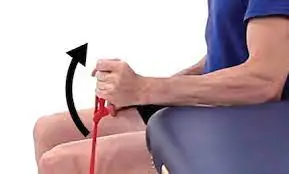
Attach the resistance band to a sturdy object or hold it in your hand. Hold your hand straight out in front of you, palm down. Grip the resistance band with your fingers. Keep your forearm still and move your hand and wrist with the thumb side against the resistance of the band. Slowly return to the starting position. Do 10-15 repetitions and then switch to the other hand.
- Radial deviation with dumbbell
Hold a light stop (or any heavy object) in your hand. Rest your forearm on the table or in your lap, palm up. Let the bar roll toward your fingers, gently stretching the inside of your forearm. Use your wrists and hand muscles to lift the dumbbell, bending your wrist to the side of your thumb. Lower the stop with control. Do 10-15 repetitions and then switch to the other hand. Be sure to start with light resistance or weight and gradually increase as your strength and comfort level improves.
Special Test for Radial Deviation of the wrist
There is no specific test designed only to assess radial deviation of the individual wrist. However, some tests involving wrist range of motion may indirectly assess radial deviation as part of a broader assessment of wrist function and range of motion. Here are some tests commonly used to evaluate the wrist that involves radial deviation:
- Measure wrist range of motion (ROM):
This test evaluates the total motion of the wrist joint, including radial deviation. The examiner uses a goniometer to measure the degrees of radial deviation achieved by the subject. The person is usually advised to move the hand and wrist as far as possible to the side of the thumb while keeping the forearm stable. To measure, the goniometer is aligned with the long axis of the hand and forearm, and the degree of radial deviation achieved is noted.
- Functional tests:
Functional tests are designed to assess a person’s ability to perform specific functional movements of the wrist, which may involve radial deviation. In the test, for example, a person grasps and manipulates objects on the side of the thumb, which requires a radial deviation. The examiner observes and assesses the person’s ability to perform these functional tasks and notes any limitations, pain, or difficulty experienced during the radial deviation.
Ulnar deviation of the wrist
What is the ulnar deviation of the wrist?
- Ulnar deviation of the wrist, also known as ulnar flexion or ulnar deviation, refers to the movement of the hand and wrist towards the little finger of the forearm. In this, the wrist is bent toward the ulna, which is the smaller of the two forearm bones on the side of the little finger.
Hold your hand in front of you to understand elbow deviation, palm down. Then bend your hand towards the little finger, moving your fingers closer to the forearm. This movement is called elbow deviation.
Ulnar deviation is one of the main movements of the wrist joint and plays an important role in various functional activities. This allows the hand to move to the side of the little finger, which enables activities such as picking up objects with the little finger, playing an instrument, typing on a keyboard, and performing certain sports movements.
Radial deviation, as previously mentioned, is an opposite movement where the hand and wrist bend towards the thumb of the forearm. Both ulnar and radial deviation are necessary for total wrist mobility and dexterity, allowing for a wide range of hand movements and functional tasks.
Ulnar Deviation Muscle
The primary muscles responsible for elbow deviation or wrist flexion are in the forearm. Together, these muscles may create and regulate movement. The main muscles involved in wrist elbow deviation are:
- Flexor Carpi Ulnaris: This muscle is located inside the forearm (side of the arm). It originates from the medial epicondyle of the humerus (the bony projection on the inside of the elbow) and is attached to the long bone and hamate bone of the wrist. Contraction of the elbow flexor Carpi ulnaris causes the wrist to deviate from the ulna.
- Extensor Carpi Ulnaris: This muscle is located on the back (back side) of the forearm. It starts at the base of the fifth metacarpal and inserts from the lateral epicondyle of the humerus. Extensor carpi ulnaris contraction helps with ulnar deviation of the wrist.
- Palmaris longus (optional): The palmaris longus muscle, if present, is a thin muscle located on the forearm. It originates from the medial epicondyle of the humerus and travels to the palmar aponeurosis (flat tendon of the palm). Although not always present in all people, when present and functioning it can contribute to the ulnar deviation of the wrist.
These muscles are innervated by the ulnar nerve, which provides the necessary signals for muscle contraction and control of wrist movements.
It is important to note that although these muscles primarily affect forearm deviation, other forearm muscles also play a role in stabilizing the wrist joint and coordinating various movements of the hand and fingers.
Wrist-ulnar deviation test
There is a special test called the Ulnar Deviation Test that can assess the trajectory of the ulnar deviation in the wrist. This can be done as follows.
- Starting position: the person being tested must sit or stand, forearm on the table or lap, palm down.
- Completing the test: Instruct the person to move the hand and wrist toward the little finger (ulnar deviation) as far as possible, keeping the forearm stable on the surface. Encourage them to move in their comfortable range of motion and avoid pain or discomfort.
- Measurement: Monitor and assess the degree of ulnar deviation by visually assessing the angle between the longitudinal axis of the hand and the longitudinal axis of the forearm. To get a more accurate measurement, you can compare it to a reference point or, if possible, use a goniometer.
- Repeat and average: To make sure the test is reliable and consistent, repeat it numerous times. Take two or three measurements and measure them to get a more reliable estimate of the extent of a person’s ulnar deviation. This ulnar deviation test helps assess the range of motion of the ulnar deviation at the wrist.
Range Of Motion Of Wrist-ulnar Deviation
The normal range of motion for ulnar deviation of the wrist is usually about 30 to 45 degrees. This means that with a healthy wrist, the hand can move to the side of the little finger approximately 30-45 degrees from its neutral position. However, it is important to note that there can be individual variation and factors such as age, joint health, previous injuries, and anatomical differences can affect range of motion.
You can use a goniometer to measure the range of motion (ROM) of the ulnar deviation of the wrist. This can be measured as follows.
- Location: Ask the person being assessed to sit or stand with the arm on the table or lap, palms down. Make sure the forearm is stable and does not move during the measurement.
- Placement of goniometer: Place the fixed arm of the goniometer parallel to the long axis of the forearm and align it with the ulnar. Align the moving arm of the goniometer parallel to the long axis of the hand and the fifth metacarpal bone.
- Neutral position: Begin with the subject’s wrist in a neutral position, hand, and wrist in line with the forearm (no elbow or radial deviation).
- Measurement: Instruct the person to perform ulnar deviation by moving the hand and wrist toward the little finger as far as possible. As they move, observe the goniometer and note the starting point of the ulnar deviation. Return the person’s hand and wrist to a neutral position.
- Complete ulnar deviation: Instruct the person to repeat the ulnar deviation by moving the hand and wrist toward the little finger as possible. Observe the goniometer and note the maximum point reached during ulnar deviation.
- Calculation: The angle of the starting position (neutral position) is subtracted from the maximum deviation angle of the elbow. The difference between these two angles indicates the range of motion (ROM) of the ulnar deviation of the person being evaluated.
Exercise for Ulnar Deviation
Here are some exercises to help strengthen and correct the ulnar deviation of the wrist:
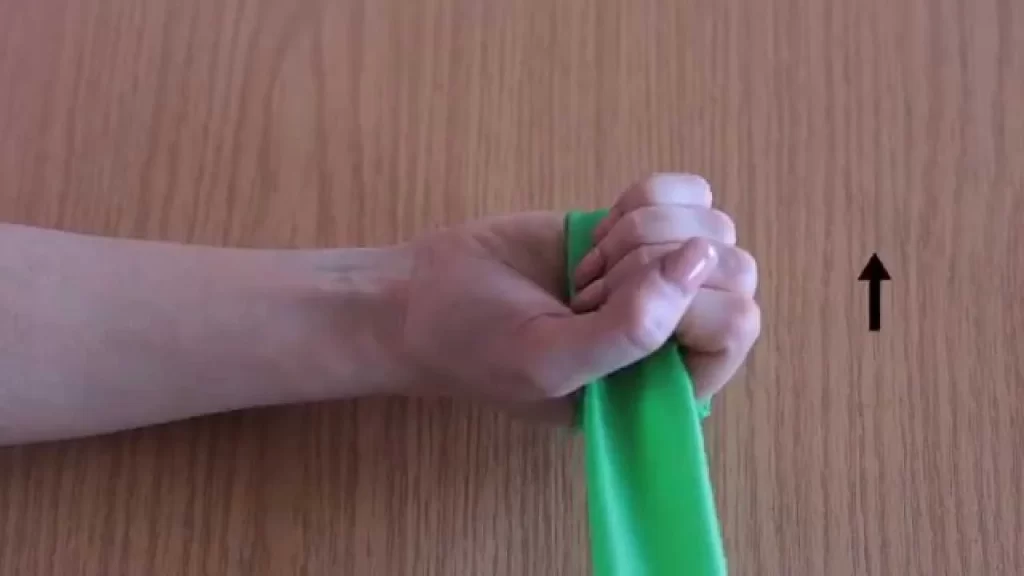
- Wrist-ulnar deviation with resistance band:
Connect the resistance band’s opposite end to a stationary item. Hold the other end of the tape with your hand, palm up. Start with your arms in a neutral position and slowly rotate your wrist toward the little finger against the resistance of the strap. Return to the starting position and repeat as many repetitions as desired. Do the exercise with both hands.
- Dumbbell Ulnar Deviation:
Hold a stop in your hand with the palm facing up. Start with your arms in a neutral position and slowly rotate your wrist toward the little finger against the resistance of the dumbbell. Return to the starting position and repeat as many repetitions as desired. Do the exercise with both hands.
- Ulnar deviation of handshake:
Hold grip or grip-accelerator. Start with your arms in a neutral position and squeeze the handle. While pressing, turn the wrist to the side of the little finger. Return to the initial position after releasing the handle. Repeat as many times as you want. Do the exercise with both hands.
- Stretching of wrist-ulnar deviation:
Extend your arms in front of you, palm down. With the other hand, gently pull your hand and wrist toward the little finger and feel the stretch on the ulnar side of the wrist. Hold the stretch for 15-30 seconds. Repeat the stretch with the other arm. It is important to start with light resistance or weights and gradually increase the intensity as you develop strength and endurance.
Special Test For Ulnar Deviation Of The Wrist
There are a number of specific tests that help assess wrist ulnar deviation. These are some of the most often-used tests:
- Wrist deviation stress test:
Position the subject with their arm resting on a table or lap, palm facing up. Stabilize the forearm to prevent movement during the test. Place your other hand on the person’s arm and grasp the metacarpals. Apply gentle but firm ulnar flexion force to the hand and wrist. Watch for pain, discomfort, or instability in the wrist during the stretch test. If necessary, compare the results with the intact wrist.
- Piano Keys Test:
Place the subject with their arm resting on a table or in their lap, palm down. Stabilize the forearm to prevent movement during the test. Place your other hand on the person’s arm and grasp the metacarpals. Apply a downward force to the person’s wrist as the person resists trying to extend the wrist. Next, apply force to the side of the little finger (ulnar deviation) as the person resists trying to do ulnar deviation. Watch for pain, discomfort, or instability in your wrist during the test. If necessary, compare the results with the intact wrist. These tests are often used to assess the stability, strength, and integrity of the wrist joint during ulnar deviation. They can help identify possible ligamentous or structural abnormalities and determine whether an ulnar abnormality is associated with pain or instability.
Conclusion
In conclusion, radial and ulnar deviation are important movements of the wrist that allow for various functional activities and contribute to joint stability. By understanding their role and the muscles involved, healthcare professionals can develop effective treatment strategies to improve wrist function and support patients in their daily lives.
FAQs
Wrist movements are described in terms of four orthogonal and anatomically defined flexions and extensions in the sagittal plane and radial and ulnar deviation in the coronal plane.
The names of the direction of movement of the two deviations are derived from the bones of the forearm, the radius and a cubit Movement towards the radius is radial deviation and movement towards the ulna is ulnar deviation.
Ulnar deviation, also known as ulnar drift, occurs when the wrist and hand joints shift, causing the fingers to bend inward towards the ulna.
Ulnar deviation occurs in the frontal plane. There is usually more joint range to the elbow. Ulnar deviation is important in the position of the hand, but much more important when using it as a powerful movement – for example with a hammer.
Ulnar deviation is equally affected by the wrist and metacarpal joints, but the radial deviation is primarily affected by the metacarpal joints. Planar wrist movements are more complex during wrist radial and ulnar deviation.
Movement restriction
Additionally, the palmar elbow ligament limits wrist extension. As a result, there is a limitation of ulnar deviation stress in the radial collateral ligament. Radial deviation of the wrist ends with bony impingement of the trapezium with the radial styloid process.

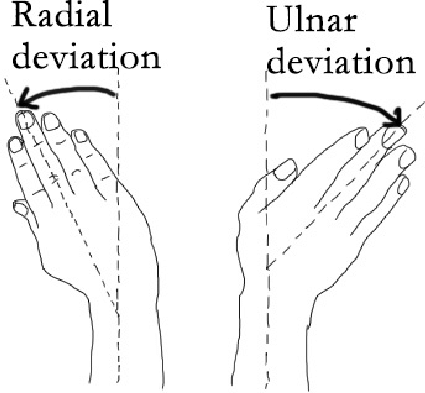



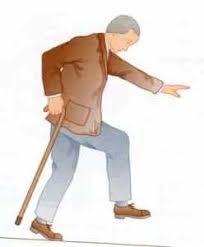
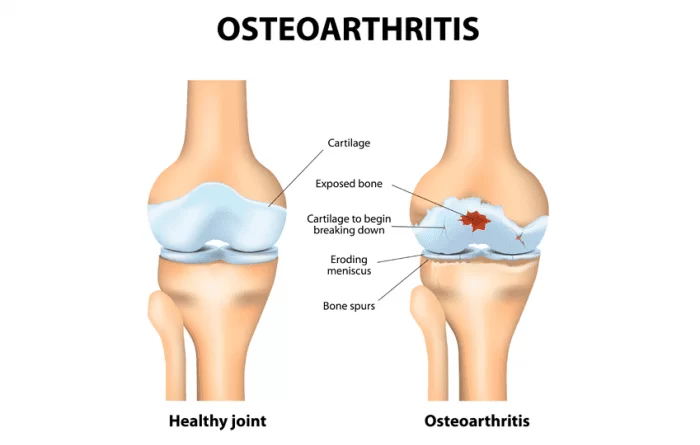
One Comment